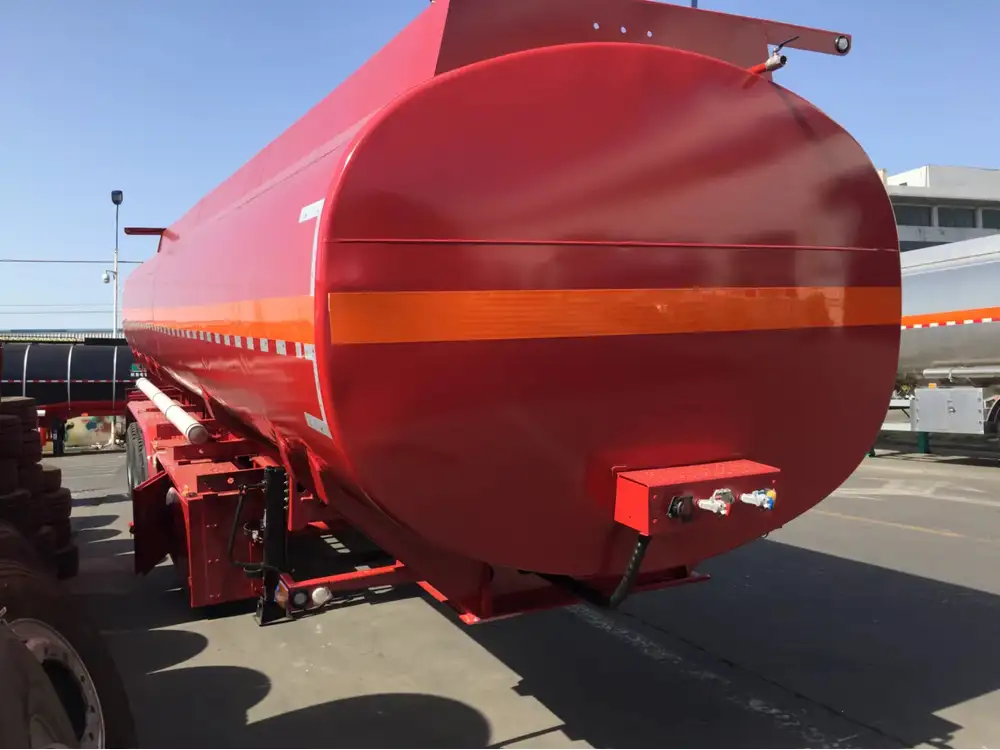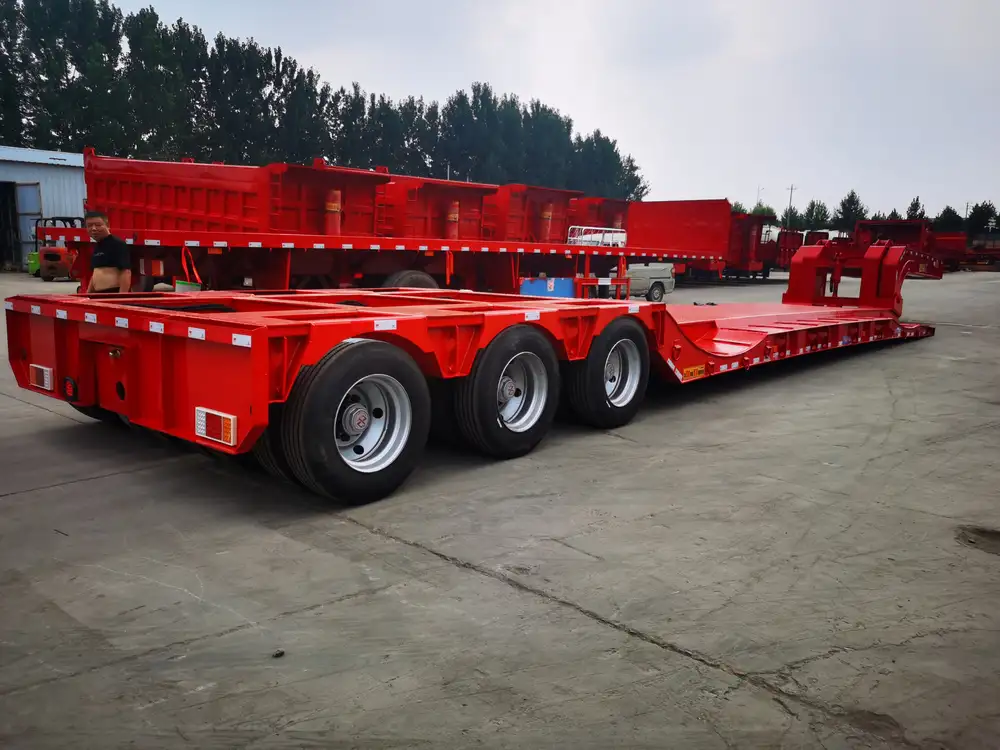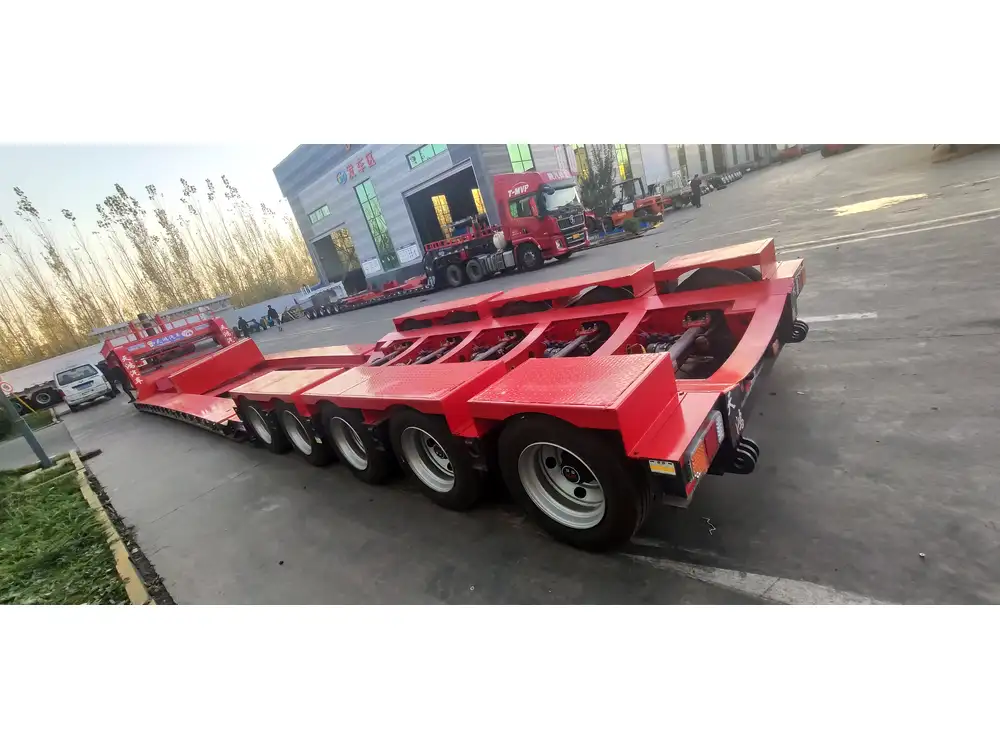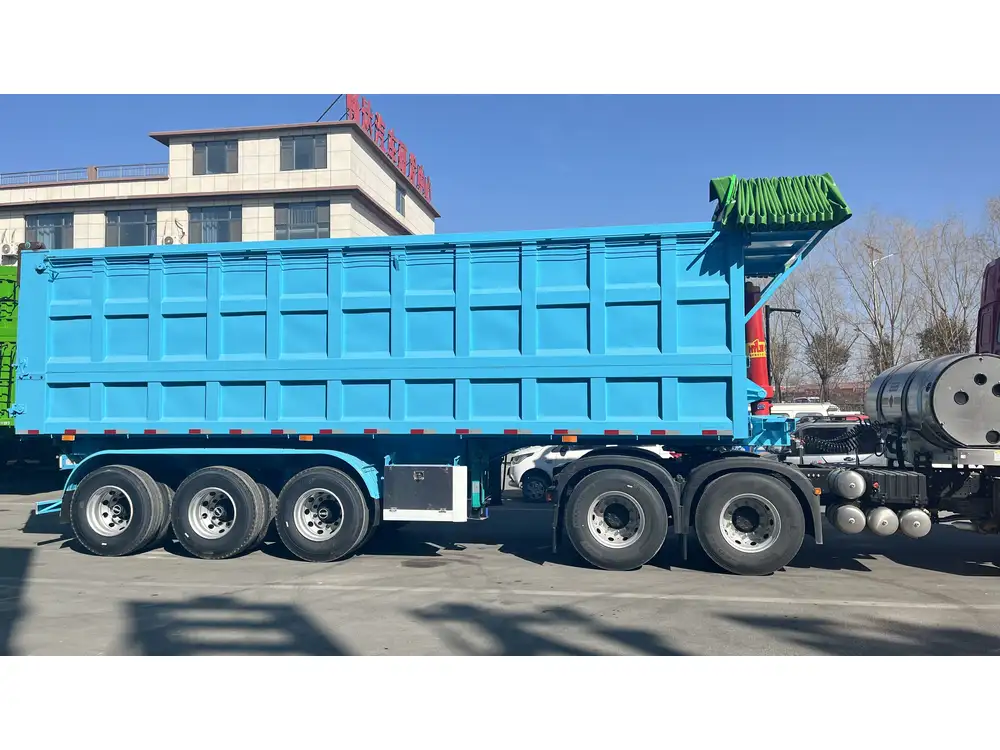End dump trailers are vital assets in the transportation and construction industries, providing efficient unloading capabilities for various materials like gravel, sand, and waste. Dumping processes can vary significantly depending on the materials and the specific end dump trailer used. Below, we delve into the essential steps, safety precautions, and troubleshooting tips to ensure a seamless dumping experience while maximizing efficiency and safety.
Table of Contents
- Understanding End Dump Trailers
- Preparation Before Dumping
- Step-by-Step Process to Dump an End Dump Trailer
- Safety Measures While Dumping
- Common Problems and Troubleshooting Tips
- Maintenance Tips for End Dump Trailers
- Conclusion
Understanding End Dump Trailers
End dump trailers are unique in their design, featuring a hinged tailgate that allows contents to be dumped at the back. Unlike side dump trailers, which discharge materials sideways, end dumps provide a higher dumping angle, facilitating efficient unloading of bulk materials.

Key Components of End Dump Trailers
| Component | Description |
|---|---|
| Trailer Bed | The chassis that supports the load. |
| Hydraulic System | Raises the trailer bed to dump materials. |
| Tailgate | Closes the trailer’s rear and assists in dumping. |
| Safety Locks | Engage to stabilize the trailer during unloading. |
Preparation Before Dumping
Prior to any dumping operation, adequate preparation is crucial to ensure safety and efficiency.
Evaluate Site Conditions
- Surface: Ensure the dumping area is stable and level.
- Space: Check for overhead clearance and ample space to maneuver the trailer.
- Soil Conditions: Be wary of soft or unstable ground, potentially leading to trailer sinking.

Pre-Dump Inspection Checklist
| Item | Action |
|---|---|
| Tire Pressure | Verify for appropriate inflation levels. |
| Hydraulic System | Inspect for leaks or malfunctioning components. |
| Tailgate Mechanism | Ensure smooth operation and closing. |
| Safety Equipment | Check the functionality of safety locks. |
Step-by-Step Process to Dump an End Dump Trailer
Now that we have a solid foundation laid out in preparation, we can proceed with the dumping process itself.
Step 1: Positioning the Trailer
- Align the Trailer: Drive forward, aligning the trailer to target the dump area.
- Engage the Brakes: Set the parking brake to prevent any movement during the unloading process.

Step 2: Preparing for Dumping
- Activate Safety Locks: Engage the safety locks to secure the trailer.
- Check the Surroundings: Ensure no one is within the vicinity of the dumping area.
Step 3: Initiating the Dumping Procedure
- Power the Hydraulic System: Activate the hydraulic system to begin raising the trailer bed.
- Monitor the Trailer’s Angle: Continuously observe the angle of the trailer as it rises.
Step 4: Executing the Dump
- Slowly Raise the Bed: Depending on the materials being unloaded, raise the bed slowly for optimal flow.
- Tailgate Functions: The tailgate should open, allowing the contents to slide out smoothly.

Step 5: Completing the Dump
- Lower the Trailer Bed: Once the unloading is complete, smoothly lower the trailer back to its original position.
- Inspect the Area: Check for any residual materials or obstructions.
Safety Measures While Dumping
Safety should always be the top priority when operating end dump trailers.
Key Safety Practices
- Wear Personal Protective Equipment (PPE): Helmets, gloves, and steel-toed boots are essential.
- Establish a Safe Zone: Designate a perimeter where personnel are not allowed during dumping.
- Stay Clear of The Equipment: Never stand under or close to the trailer while it is in the dumping position.

Emergency Shutdown Procedures
- Locate the Emergency Stop Button: Familiarize yourself with the truck’s emergency shutdown procedures.
- Perform Calmly and Quickly: In case of any malfunction during dumping, act swiftly to stop the hydraulic mechanisms.
Common Problems and Troubleshooting Tips
Even with due diligence, issues can arise while dumping with an end dump trailer. Below are the most frequent challenges and how to address them.
Hydraulic System Failures
- Symptoms: Trailer bed won’t lift; lowering is slow.
- Troubleshooting Steps:
- Check Fluid Levels: Ensure hydraulic fluid levels are adequate.
- Inspect for Leaks: Look for any visible leaks in hoses or connections.

Tailgate Malfunction
- Symptoms: Tailgate won’t open or close properly during the dumping process.
- Troubleshooting Steps:
- Examine Actuator: Ensure the actuator or latch isn’t obstructed.
- Test the Mechanism: Manually operate the tailgate to check for resistance.
Uneven Dumping
- Symptoms: Material fails to exit evenly or causes the truck to tilt dangerously.
- Troubleshooting Steps:
- Check Ground Levels: Ensure that the dump area is level.
- Assess Load Distribution: Prevent an unbalanced load during transit.
Maintenance Tips for End Dump Trailers
Regular maintenance can prolong the life of your end dump trailer and enhance performance.

Key Maintenance Practices
| Maintenance Task | Frequency |
|---|---|
| Hydraulic Fluid Replacement | Every 6 months |
| Brake System Inspection | Annually |
| Tire Rotation and Alignment | Every 6 months |
| General Wear & Tear Check | Monthly |
Seasonal Preparations
- Winter Prep: Ensure that all hydraulic fluids are suitable for cold temperatures and check for any frozen residues.
- Summer Check: Inspect your cooling mechanisms, particularly for hot-weather operation.
Conclusion
Understanding the intricacies of how to dump an end dump trailer effectively translates to enhanced operational efficiency and safety in various work environments. By adhering to a strict checklist of preparation, safety measures, and maintenance practices, you can mitigate potential risks while maximizing productivity. Remember, knowledge and preparation are your best tools in ensuring a seamless operation.
By employing the strategies outlined in this guide, we aim to facilitate a smoother and safer dumping experience, contributing to the effectiveness of your operations. Proper awareness and action during each phase—from the pre-dump inspection to the maintenance regimen—can make a marked difference in both outcomes and operational costs, ultimately ensuring your investment in end dump trailers pays dividends.



